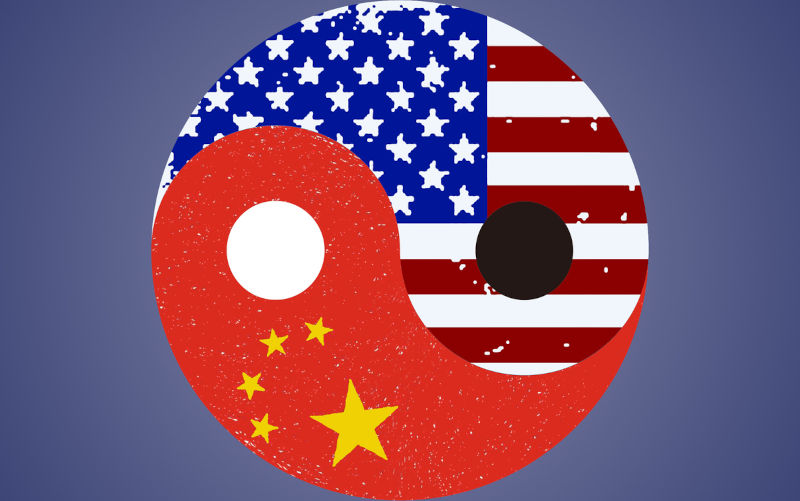The paranoia of China going global
September 12, 2023
Empires are anxious creatures, run by those predatory types with egos vast and awareness minimal. The awareness only gets pricked when risks are posed to the financial returns, military security, what might be called, at a stretch, their way of living. Such risks can come in many forms, and for the US imperium, its less a warming planet and global poverty than the threat posed by the Peoples Republic of China.
A template for assessing such anxiety is easy to create. It involves a mirroring, a replicating. First, it consists of mugging, marauding, appropriating, stomping, and plain bullying the mandatory credentials of empire. The comes the justification: manifest destiny, inherent superiority, the solemn duty of civilisation-minded types to redo the world. Add the garb of freedom, the cologne of a mangled political system. Then rule, always mindful of challengers, ensuring that usurpers are kept in check, boxed, bought off. Maintain a global system of military bases. Run needlessly large defence (read offence) military budgets while keeping defence contractors in the pink. Browbeat allies into increasing their military expenditure. Strongarm the compliant into hosting more bases or enlarging existing ones.
For the United States, which pretty much conforms to such a template, China is their mirror, a terrifying one that augurs ill for Freedom Land. The Belt and Road Initiative is a stealthy way to global domination, infrastructure as imperial ambition. Aid is a mechanism to secure allegiance to Beijing in the Global South, hobbling and trapping partners along the way. Then comes its burgeoning armed forces and territorial bluster in the South China Sea, its angry messages about Taiwan, and the growth of its nuclear arsenal.
Outlets such as the New York Times are only too happy to go along with such articles as that by Craig Singleton of the Foundation for Defence of Democracies. His claim is a booming one, and no doubt occupies much space, digital and otherwise, in the Pentagon, the intelligence communities, and any number of empires grand consuls. The title of his latest is revealing enough: Chinas Military is Going Global.
The mirror effect is much at play in Singletons thesis. The establishment of bases features he notes the Ream Naval Base in Cambodia, even though it is Chinas first overseas military outpost in the Indo-Pacific region. He notes the expanding military mission centres on establishing what [the PRC] calls strategic strong points along Chinas major trade, energy and resource routes, especially those that run from China through the Malacca Strait and into the Indian Ocean and the Gulf of Aden.
And what of it? Speculation follows. Such strategic strong points, he suggests may result in new bases that could be advanced staging areas for its armed forces or platforms. China may reach access agreements with host countries that allow for refuelling, repair and short-term stopovers for Chinese military assets or personnel.
Singletons anxiety acts as ventriloquist for the Zeitgeist of US insecurity, an addling potion of fear, petulance and pride. The 2022 annual report on military and security developments involving the PRC by the Pentagon was none too pleased with what it found, but, as with most paranoid tracts, proved less than convincing in filling out the details of a global military monster. Chapter Four, for instance, expressly gives room to the PLAs growing global presence, though the content of the report is far from shattering. Much of the language used here anticipates; global military China remains embryonic, if that. The CCP has tasked the PLA to develop the capability to project power outside Chinas borders and immediate periphery to secure the PRCs growing overseas interests and advance its foreign policy goals.
It points to Chinas continued promotion of the BRI and the quest for new cooperative security partnerships with foreign nations, including the expansion of the PLAs global military attach presence and access, expansion of strategic partnerships, and ensuring more reliable, cost-effective, and diverse sources of energy and other strategic resources.
How utterly terrifying this must be to the worker bees and strategists of the US Defence Department. It shows an ignorance (intentionally or otherwise) of the fact that Chinese defence investments are not, as Dan Grazier of the Project on Government Oversight points out, suited for foreign adventurism but are instead designed to use relatively low-cost weapons to defend against massively expensive American weapons.
The core strategy here is to keep foreign powers, notably the US, at bay through a strategy of active defence. Central is the defensive Anti-Access/Area Denial (A2/AD) doctrine, designed to, in the words of the Pentagons 2021 annual report on China, dissuade, deter, or, if ordered, defeat third-party intervention during a largescale, theatre campaign.
Such a Sino-phobic screed was far from alone, keeping company with a whole slew of other China-obsessed documents released that month in 2022: the National Security Strategy, the National Defence Strategy, the Nuclear Posture Review and the Missile Defence Strategy. This mania takes pride of place despite, as Michael E. OHanlon of Brookings notes, Beijing having not employed large-scale military force against an adversary since its 1979 war with Vietnam.
While it is true that Beijing has had an annual growing military budget to the tune of 7%, spending approximately $250 billion to $300 billion per annum, it still comes substantially short of the US total which touches the giddy heights of $800 billion. In comparative terms, the PRC military budget hovers at around 2% of GDP; the United States remains dominantly indulgent at 3%.
Ultimately, things really fall apart on the issue of US military bases the world over. Washington has a jaw dropping number: 750 across some 80 countries. Chinas complement is humbling to the point of embarrassment: roughly eight, including one in Djibouti and a number based on constructed islands in the South China Sea.
Relative to the global strategic footprint of the US empire, the Chinese contribution is, as things stand, a whimper.

